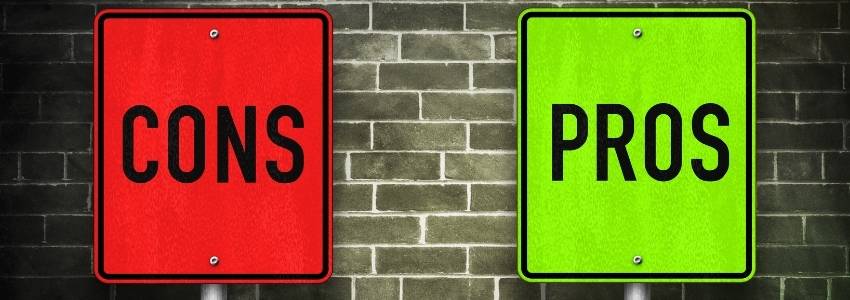One of the great things about being in dropshipping is that it puts the power of eCommerce—an industry estimated at $3.46 trillion in 2019 alone—in the palm of anyone’s hands. You don’t have to be a retailer with a million-dollar budget to be successful with dropshipping. But you will have to have time, patience and above all, ambition.
What Is Dropshipping?
Dropshipping is essentially a business model where a seller acts as a virtual retail storefront selling products on behalf of suppliers who physically own and stock the product themselves. Your dropship supplier is your vital partner in your ecommerce business.
Any legitimate dropship supplier will have at least one warehouse. If they don’t have a warehouse to ship out from they are technically not a dropship supplier, they are a middle man.
Dropshipping is where you only sell the product online without actually maintaining inventory or fulfilling the shipment of the orders. That’s the short answer.
To elaborate further, what that means is every aspect of the backend, including production, packaging and shipping, is handled by the dropship supplier.
The online retailer (that’s you), your role, on the other hand, can be a little bit more complex than it might seem. You are not just responsible for processing the order and establishing a relationship with dropship suppliers. You also need to actually set up the online storefront, provide customer support, field questions and complaints and learn how to market products successfully.
The Pros And Cons Of Dropshipping
- Pro: Minimal Cost and Start-Up Effort
Ultimately, your start-up cost of a dropship business will usually start with setting up the right web hosting service and external plug-ins—or any third party aggregators you might decide to use (we’ll get into that in a little bit.)
Legitimate dropship supplier will not charge you an ongoing fee to use their service, chiefly because the benefit you provide to a supplier is that of having the time to actively market to customers. As a result, your startup effort literally consists of setting up your storefront and forwarding your orders to your supplier to be shipped out to your customers.
- Con: Limited Control Over Inventory
Retailing products from dropship suppliers means you do not have to carry inventory. This can be a con or disadvantage because sometimes you’ll work with a dropship supplier who runs out of inventory rather quickly forcing you to wait for the product to be shipped. And if the supplier inventory takes too long to arrive you may have to refund the order to your customer or work out other arrangements. This is not common, but it is highly likely to happen during the course of building your dropship business.
- Pro: There are virtually No Overhead Costs Associated
Let’s assume you’re a traditional storefront. You have a warehouse, you sell online and you have a brick and mortar store. Not only are there costs involved in buying/leasing the office space, but there are sales & marketing costs; there’s storage, employees, warehouses and the actual cost of inventory to think of. All of which can wind up costing you hundreds of thousands to millions of dollars a year in overhead following that type of business model.
With dropshipping it’s much different. Your two primary overhead costs in dropshipping are the costs of setting up/designing your dropship website/store and then ongoing marketing expenses. Your storefront can literally be operated from anywhere at any time with virtually no physical liability.
- Con: You’re Liable For Any Mishaps With An Order
Mishaps, lost orders, are an inevitable part of any e-commerce transaction, and dropshipping is no different. Except you, as the retailer, are responsible for any errors in shipping; even if it’s a result of a supplier oversight. Like it or not, you’re the face of your storefront—which is one reason to only work with suppliers with a proven track record (particularly international ones.)
- Pro: Your Business—Freedom to Choose
With dropshipping, your control over both your product line and the size of your business is limited only by your ambition. You can choose a unique specialty niche, or you can focus on general merchandise with a broader appeal. You can use drop shipping simply as a lucrative side hustle or you can choose to transform it into a full-time business. Whatever your vision is, dropshipping is flexible enough to accommodate it.
- Con: More Competition Means More Effort
If you’re expecting dropshipping to be a relatively unknown phenomenon, you’re in for a surprise. There are millions of people just like you who see the freedom and possibility in dropshipping and have already successfully carved their own niche in the industry. That does not mean dropshipping is going to be impossible for you. It just means that you’re going to have to choose the right niche and learn how to actively sell products competitively.
Who Shouldn’t Build A Dropshipping Business
Most people are drawn to the idea of dropshipping because it seems like an easy, no-obligation way to turn a profit overnight.
It isn’t.
Some people might even be lured in by talking-heads on YouTube videos promising the secrets to instant success in dropshipping that will make you earn six figures in less than six weeks.
Don’t be.
Dropshipping is a business—and like any other business, it means hard work. It’s not for the unmotivated. It’s not for the lazy. And it’s not for you if you assume there’s going to be a shortcut to profitability. It takes time. It takes foresight. It takes planning. It takes understanding. And it takes persistence.
The truth of the matter is that 85 percent of you reading this are probably not going to be able to quit your day job with dropshipping alone. At least, not in the way you’ve come to associate with dropshipping. And certainly not overnight.
In order to keep up with the pace of eCommerce, you’ve got to consider all models; including warehousing, third party fulfillment (such as Amazon FBA,) affiliate programs, wholesaling and private label in addition to dropshipping.
In short? Passive income may be a bit of a misleading term when it comes to dropshipping. At least if you want to be successful at it. It may not require a huge financial investment comparatively speaking, but it requires an investment of something even more valuable: your time and your hard work.
How Profitable Can Dropshipping Be?
For the most part, the profitability of dropshipping depends on three factors:
- Your niche
- Your competition
- Your audience
It’s not unheard of for a dropship retailer that I mentor to make upwards of $50o to $2,000 profit on each high ticket sale. They didn’t necessarily turn that profit overnight. They built a steady reputation; sometimes slowly, sometimes quickly. Let’s look at those three factors a little bit more in-depth.
Your Niche
This isn’t just a question of saturation. It’s a question of viability. It might seem like it’s a given that the more specialized your niche is, the less you have to worry about competition. But the lack of competition might just be the result of a lack of interest or demand. There’s no doubt that suppliers exist for any and every product imaginable, but that doesn’t mean there’s a widespread market for any and every product imaginable!
Your Competition
The more popular your niche is, the more you have to worry about competition. You may be tempted to compete at first by offering cheaply made competitive products at rock bottom prices, but that’s not a good long term strategy. In fact, it’s not even a good short term strategy. Customers know the difference between a bargain and a bootleg these days, and they’re more apt to pay for the former.
Your Audience
This is where research becomes an absolutely critical component of your dropshipping business. It’s not enough just to choose your own niche. You need to identify just who your audience is and what else they’re buying.
Are you specializing in home furnishings? Pay attention to some of the hot sellers, whether it’s through analyzing your dropship competitors in your niche or speaking with your suppliers to confirm the best daily selling products. Trends aren’t always stable, even if some seem to have greater longevity than others. They don’t just change from year to year, but month to month. And sometimes, week to week.
What Is A Dropship Aggregator?
The surge in the popularity of dropshipping has given rise to an entirely new type of supplier. In the past, dropship suppliers were generally either wholesalers or general suppliers which provided consistent service and reliable merchandise. Both typically had a waiting period for approval which could sometimes stretch out to be literally months on end.
As a result, dropship retail aggregators like AliExpress, Doba, Oberlo and Spocket allow drop shippers a centralized portal where they can choose from multiple suppliers without having to wait for the approval because they already did the work of getting approved directly with the supplier.
In theory, it’s a great idea. It’s certainly more convenient than reviewing an endless parade of dropship suppliers to find the perfect match for you. But there are a few drawbacks to using drop ship aggregators.
For one, a dropship aggregator is essentially a middleman—which means your profit margin is going to be significantly lower than if you were to actually deal directly with a traditional drop ship supplier. Sometimes, by as much as 20% or more.
That’s primarily because the competition isn’t just high on dropship aggregators. It’s flooded because it’s easy. Remember, drop shippers can sometimes be subject to some fairly drastic inventory shortages. Shortages which are only amplified when you have thousands of retailers purchasing the same item from the same supplier.
Though it’s not just supply and demand that’s an issue with aggregators. It’s quality control. You have no idea just who your supplier is—their history, their service and more importantly, the quality of their merchandise.
There’s no doubt that dropship aggregators are a great way to get your feet wet in the business. But if you’re going into dropshipping for the long haul, make a splash and contact suppliers directly. You’ll find it can be a much more sustainable solution for you.
Is Dropshipping Right For Me?
Whether or not dropshipping is the best solution for you as an entrepreneur depends on just how committed you’re going to be. As I indicated at the very beginning, you’re not going to get rich overnight. In fact, you may not get rich at all. It’s not just a question of time and effort. It’s a question of profitability.
The truth is, dropshipping has a much smaller profit margin than other forms of retail eCommerce. That doesn’t mean you can’t transform dropshipping into a full-time business. But at some point, you may want to review additional options to increase profitability for passive income.
Other popular ways to make money online could include wholesaling, private labeling, or building an online business based upon an entirely different model such as affiliate marketing, membership sites or professional services.
On the other hand, dropshipping is a low-risk business venture. There’s virtually no overhead and absolutely no obligation. You might find it’s perfectly suited as supplementary income. You might be so successful with dropshipping that it becomes your main source of income like many of my advanced mentoring students achieve. Or you may find that you’re simply not suited for it altogether. Like any other venture in life, there’s no crystal ball nor is success guaranteed.
Though just like any other business venture, dropshipping comes with its own reward that can’t be measured in profitability. In the end, that just might be the greatest motivation of all. The person you become by trying could be your reward. The skill sets you develop.
I’ve been helping both aspiring drop shippers and other passive income seekers maximize their potential as well as their profits for almost fifteen years. To find out how I can help you achieve your goals of financial freedom, sign up here for a free 30-minute breakthrough call!
Top 10 secrets of choosing the best dropship products
- High ticket product?
- Can all of your core products retail for $200 or more? High ticket products lead you on a path of making more money per sale than small end products below $100, it’s that simple.
- Multiple daily selling product?
- Choose products that sell multiple times every day. Research sold listings on ebay, look at product reviews on retail competitors and selling platforms like Amazon, etsy, etc and observe if the product sells daily. Speak with your suppliers most importantly and ask them directly about what products on flying off the shelves each day. Focus on adding and selling those products first on your dropship store.
- Low Market Saturation?
- Is the product sold on 5 to 20 websites via Google Shopping? If sold on more than 20 it’s too saturated. Competition is good, but not too much. Research buyer intent keywords on SEO analysis sites like ahrefs.com to online demand. It’s important to know people are actively searching for your products online to make sales organically.
- No sizing & style preferences?
- To avoid high return rates, avoid choosing products with a lot of styles and sizing options like shoes, clothing, personalized custom-fit items, etc. Most of those products customers return because something doesn’t fit just right. It’s a pain to deal with.
- Many styles & variations?
- Are there many styles & variations of the same exact product a customer can choose from? If yes, that is good factor to have when choosing winning dropship products.
- Customer doesn’t mind waiting?
- Call your competitors and see how long it takes for the product to be shipped. If customers are still buying it because of it’s uniqueness despite it taking 7 day or longer to ship that can be a good sign that the product is unique and cannot be easily found off-line forcing customers to buy on the internet.
- Low Shipping Weight and Not Fragile
- Is the average weight of the product below 8-11 lbs and not fragile? Products that are heavy and fragile cause more problems and eat into your profits very fast due to return fees and wasted time.
- Not in Peak Season & Is Trending?
- Is there a peak season for this market? If so that’s not as good for consistent profits for a single store. Is it trending? That’s good. Use this site to investigate the historical trend patterns for your product: https://google.com/trends
- No World/National Brands?
- Does the customer care about brand? If so choose a product where people could care less about the brand.
- Does the supplier of your product require & enforce M.A.P. ?
- Not all suppliers will have a minimum advertised policy agreement in place for all retailers of their products, but if they do that’s a huge perk for you! An example of a MAP supplier in the fitness industry is BodSolid.com
- For example, you can see here on Google Shopping that there is a pattern of seeing a minimum advertised price of $1645 for one of BodySolid’s products. the minimum prices are all the same.


Leave a Reply